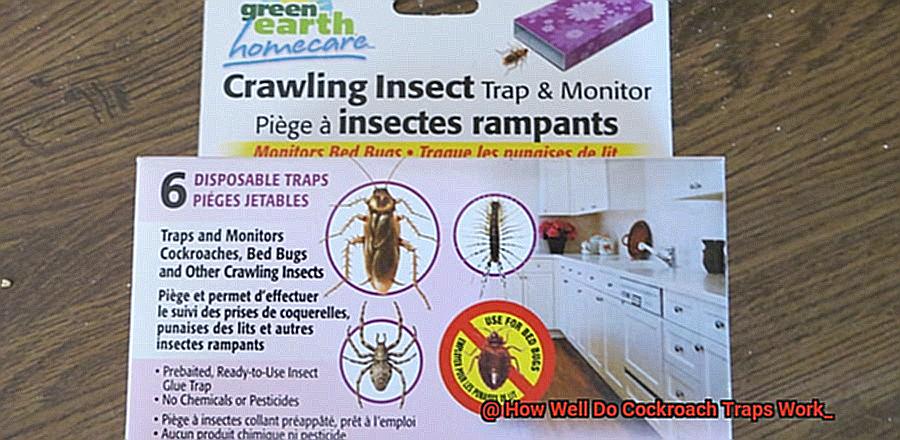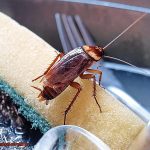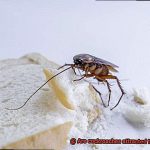How Well Do Cockroach Traps Work? Are you dealing with a cockroach infestation?
It can be incredibly frustrating. You may have tried sprays, baits, and traps – but do they work?
How well do cockroach traps perform? Cockroaches are hardy pests that can take over your house if not dealt with properly.
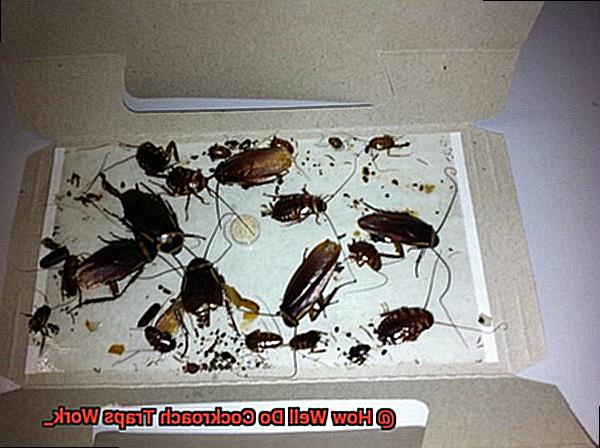
They can survive on food for up to a month, reproduce quickly, and hide in even the smallest of cracks. So it’s understandable why many people turn to traps as a last resort.
The effectiveness of cockroach traps depends on several factors, such as the size of the infestation, the species of roach, and the type of trap used. The two most common types are sticky traps and bait traps.
Sticky traps are small pieces of cardboard or plastic coated with a non-toxic adhesive that catches cockroaches when placed near their hiding places. Bait traps contain an insecticide mixed with food or sugar that kills roaches when ingested.
These traps can help reduce small infestations, but may not be effective against larger ones. It’s important to remember that these should only be used as part of an integrated pest control program that includes proper sanitation and exclusion procedures.
Knowing how these traps work and using them correctly will help you get rid of them once and for all.
Let’s get started now.
How Do Glue Traps Work?
Contents
- 1 How Do Glue Traps Work?
- 2 How Do Bait Traps Work?
- 3 How Do Snap Traps Work?
- 4 Pros and Cons of Different Types of Traps
- 5 Tips to Maximize the Effectiveness of Cockroach Traps
- 6 Common Mistakes People Make when Using Cockroach Traps
- 7 Signs of a Cockroach Infestation
- 8 Other Ways to Get Rid of Roaches
- 9 Conclusion
Cockroaches can be a real nuisance, but thankfully there are ways to get rid of them.
Glue traps are one of the most popular and cost-effective solutions for deterring these unwelcome visitors from your home. But how do glue traps work?
Glue traps use a sticky adhesive to trap the insect, making it impossible for them to escape. The glue is usually scented or flavored to attract the cockroach to the trap, and once they walk onto it, they become stuck and unable to move.
They’re an effective way to catch individual cockroaches or a small number of insects. To maximize their effectiveness, it’s important to place them in areas where cockroaches are likely to frequent, such as near kitchen cabinets or in corners of the room.
In addition, cockroaches can learn how to avoid the traps if they have had contact with them in the past.
How Do Bait Traps Work?
Bait traps are an effective way to tackle cockroach infestations in your home.
These traps use a lure, usually a food or pheromone-based bait, to attract cockroaches and draw them inside. Once they consume the bait, which contains insecticide, they die within a few hours.
This process continues as the dead cockroach attracts more and more of its kind to the trap until the population is eradicated. For bait traps to be fully effective, it is important to place them in areas frequented by cockroaches and keep them clean and free of debris.
Additionally, it is essential to monitor the traps regularly and replace them once the bait has been used up. Some roaches may be able to avoid the traps altogether, so using a combination of baits and insecticide sprays will ensure that all bases are covered.
Bait traps are a safe and non-toxic solution for controlling cockroach infestations in homes with children or pets; however, they require patience and diligence for successful implementation.
How Do Snap Traps Work?
Snap traps are an effective and efficient way to rid your home of pesky cockroaches.
This type of trap works by using a trigger system, which is baited with food to attract the cockroaches. When a roach steps on the trigger, a metal bar is released and swiftly snaps down, trapping the insect.
Some snap traps are designed to be reusable, allowing you to clean them and use them multiple times. It’s important to place these traps in areas where cockroaches are likely to travel, such as under sinks, behind appliances, and in cabinets.
Snap traps can also be used in conjunction with other methods of controlling infestations such as sealing cracks and crevices and keeping food and garbage in sealed containers. This helps minimize the population of roaches in your home or building while preventing their spread.
Think of snap traps as little sentinels standing guard against these unwanted invaders; they may not be able to eliminate an entire infestation on their own, but they can certainly help reduce the population significantly.
Pros and Cons of Different Types of Traps
When it comes to selecting the right type of cockroach trap, there are many options available in the market.
Each one has its own advantages and disadvantages, so it’s important to consider both before making your choice. Glue traps are a popular choice as they are affordable and easy to use.
The sticky adhesive effectively traps roaches in their tracks, but they can survive on the traps for up to a week without food or water. Furthermore, these traps are not humane as they do not kill roaches instantly.
Bait traps offer an environmentally friendly and non-toxic solution. The bait inside attracts roaches, and once they consume it, they die.
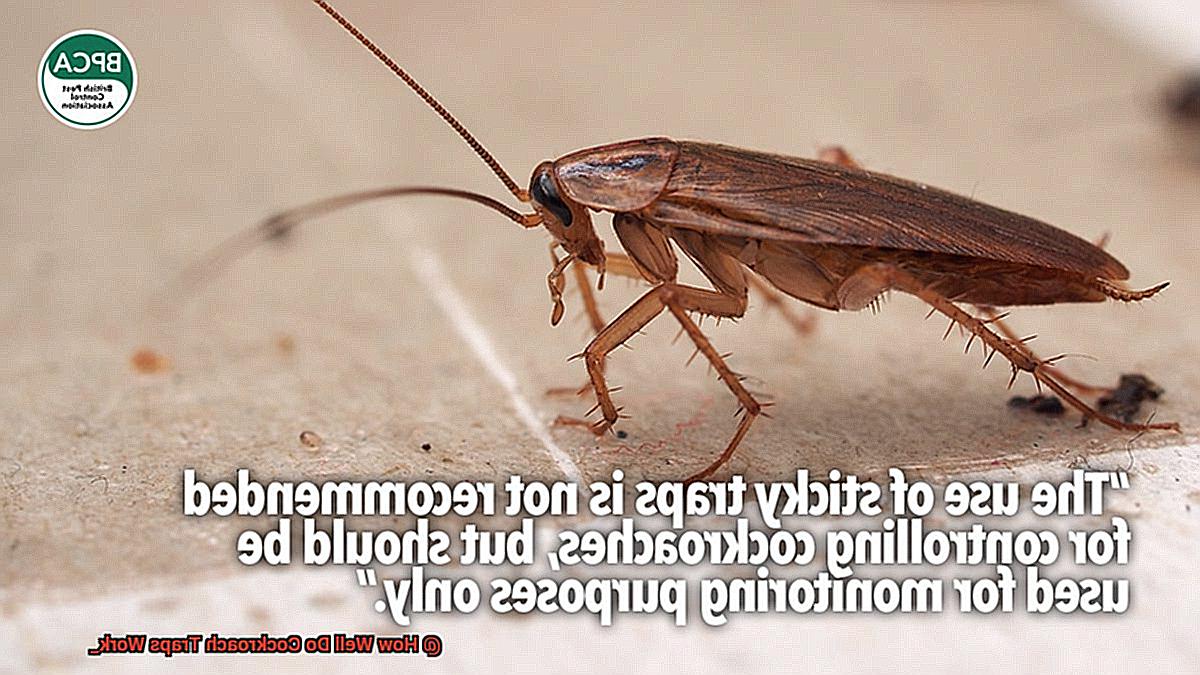
However, bait traps take time to work and may not be attractive to all roaches. Additionally, the roaches may transfer the bait to other areas of the house before dying.
Ultrasonic traps emit high-frequency sound waves that repel roaches and are safe for pets and humans. However, these traps may be expensive and ineffective in large spaces.
Plus, they do not kill roaches – only repel them – so it may not be a long-term solution. Electric traps electrocute roaches on contact, killing them instantly but must be placed in the right location or else they may not attract any roaches at all.
They can also be relatively expensive initially.
Tips to Maximize the Effectiveness of Cockroach Traps
Cockroach traps can be a helpful tool in your mission to eliminate these unwanted pests, but they aren’t always successful on their own. Here are some tips to help maximize the effectiveness of your cockroach traps and keep your house roach-free.
Strategic placement
The placement of traps is key to trapping cockroaches effectively. Place them in areas where they are most likely to be, such as near their hiding places, along walls, and in corners of rooms. Additionally, make sure the traps are easily accessible so that the roaches can find them quickly.
Proper baiting
Some cockroach traps come with bait included, while others require you to add your own. In either case, it’s essential to use the right type of bait to attract cockroaches to the trap. You can use a variety of foods such as peanut butter, bacon, or sugar water to lure roaches into the trap.
Keep a clean environment
Cockroaches thrive in dirty and cluttered places so it’s important to keep the area clean and minimize clutter as much as possible. Vacuum regularly, wipe down counters and floors often, and seal all food containers tightly so they don’t have easy access to food sources.
Use multiple traps
One trap may not be enough to get rid of all the cockroaches in your home so consider using multiple traps in different areas of your house for better results. Additionally, check them regularly and replace old ones with new ones every few weeks or sooner if they are not catching any roaches anymore.
Check and replace regularly
Checking the traps regularly is crucial for ensuring they remain effective; if a trap has caught a cockroach, remove it and replace it with a new one immediately. Checking them also helps identify areas where there is more activity so you can target those areas specifically with more traps or other methods if needed.
Common Mistakes People Make when Using Cockroach Traps
Using traps can be an effective way to get rid of these pesky critters and keep them away for good. However, there are some common mistakes people make when using these traps that can reduce their effectiveness.
First, it’s important to place enough traps in the affected area. Cockroaches move quickly, so multiple traps in strategic locations will help you capture as many as possible.
Additionally, make sure the traps are placed correctly – cockroaches may not be able to reach them if they’re blocked by furniture or walls. It’s also important to check the traps regularly and replace them when they’re full.
If you’re using bait traps, remember to change the bait regularly – fresh bait will attract more cockroaches than old bait. Additionally, make sure you’re using the right type of trap for the species of cockroach you’re dealing with; different species have different behaviors and preferences, so it’s important to use a trap that is most effective for that particular species.
While traps can certainly help control the problem, it’s still essential to identify and address any sources of an infestation such as leaky pipes or food sources in order to prevent future infestations.
Signs of a Cockroach Infestation
Cockroaches are experts at hiding, making it difficult to know whether you have an infestation or not. To help you recognize the signs of a cockroach infestation, here are six things to watch out for:
- Cockroach droppings: These look like small, dark specks or stains which can often be found in the corners or along the edges of walls and floors.
- Unpleasant odor: Cockroaches release a particular odor that is described as musty or oily and can become more pungent in areas with a large infestation.
- Egg casings: These egg casings usually measure up to 8 mm long and are found in dark, hidden places such as crevices and cracks behind furniture.
- Shed skins: As cockroaches grow they shed their skin which appear as tiny, transparent, empty shells.
- Cockroach sightings: If you see one during the day it is likely that there are many more hidden in your home since they are nocturnal animals.
- Grease marks: Cockroaches leave behind a trail of grease wherever they go such as along walls and floors.
If any of these signs of an infestation are present, it’s important to take action immediately as cockroaches can quickly multiply and become difficult to control once their numbers have increased dramatically.
9TCJN5KrFXA” >
Other Ways to Get Rid of Roaches
Getting rid of cockroaches can be a challenge, but there are several ways to get rid of these pesky pests.
From sticky traps and bait stations to dusts and sprays, you have many options for controlling roach populations in your home. Sticky or glue traps are a popular choice, as they trap the roaches and keep them from moving.
Cockroaches are attracted by bait traps or pheromones, while snap traps trip a mechanism that snaps shut and kills the roach on contact. Boric acid is also an effective, affordable way to get rid of roaches; simply dust it behind appliances, in drawers, and any other potential hiding places for the roaches.
If your infestation is severe, you may need to call a professional pest control service that has access to more potent chemicals and equipment. However, prevention is key when it comes to eliminating roach populations in your house.
Make sure you keep your home clean and eliminate potential food and water sources; seal cracks and crevices to prevent roaches from entering in the first place.
Also Read: Do glue traps work for roaches? – All About Roaches
Conclusion
Cockroach traps can be a cost-effective way to get rid of these pesky rodents.
But, for maximum effectiveness, it’s important to understand how the various traps work and where to place them strategically. Sticky traps, bait traps, snap traps, and ultrasonic traps all have their pros and cons – so consider them carefully before making your decision.
For optimal trapping success, locate the traps near cockroach hiding places. And don’t forget to use the right bait.
Additionally, maintaining a clean environment with minimal clutter will help reduce the population significantly. Although cockroach traps are helpful in your quest to banish these pests from your home, they aren’t always effective on their own.
To prevent future infestations, use a combination of techniques such as sealing cracks and crevices plus sealing food and garbage in sealed containers.

